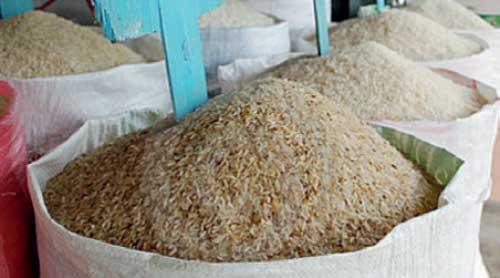24 May 2021 - {{hitsCtrl.values.hits}}
Sri Lanka’s national prices rose in April as prices of food items from rice to coconut oil to chicken to fish rose faster than the prices of non-food items, the Department of Census and Statistics said.
 Sri Lanka’s island wide prices rose by 5.5 percent in the twelve months to April 2021, accelerating from 5.1 percent in March before the new set of virus related restrictions were imposed slowing consumer activity.
Sri Lanka’s island wide prices rose by 5.5 percent in the twelve months to April 2021, accelerating from 5.1 percent in March before the new set of virus related restrictions were imposed slowing consumer activity.
The April reading of the national consumer prices marked the highest since October 2020 when prices rose by a similar level when the virus struck for the second time affecting mostly the populous regions in the country.
The Monetary Board which met last week said prices would remain within the desired level of 4 to 6 percent in the remainder of the year although certain near term price pressures would emerge due to the supply side disruptions from the ongoing third wave of pandemic-related economic restrictions.
Food prices in April measured by the national consumer prices data rose by 9.7 percent from a year ago, accelerating from 8.8 percent in March 2021, as prices of vegetables, rice, coconuts, turmeric powder, coconut oil and Mysore dhal rose the most.
On a month-on-month basis, food prices rose by 0.1 percent from a contraction of 1.4 percent in March as prices of rice, coconut oil, chicken, fish, dried fish, sugar, green gram, fresh fruit, Mysore dhal and a few others rose while the prices of vegetables, coconut, big onions, red onions, eggs, turmeric powder and a few others eased.
Mirror Business recently showed that prices of key varieties of rice had risen by between 15 to 30 percent during the year through April third week and had continued to rise through May, amid the country recording a record paddy harvests in both cultivating seasons for two consecutive years.
The government appears to have lost control over surging consumer prices, making large swaths of people poorer than before as authorities are increasingly putting restrictions on people’s livelihoods citing COVID, while the Central Bank continues to print money to pay salaries for nearly 1.6 million of State sector workers who generate no real productivity, creating a fertile ground for inflation.
Import controls are also pinching the consumer the most as it created an oasis for the domestic producers to exploit the customer, hiding behind so-called national interests, while the government’s import substitution policy has dealt a massive blow to consumers.
Meanwhile, non-food prices rose by 2.2 percent in the twelve months to April 2021, up from 2.0 percent in March 2021 as people increased spending on clothing and footwear, transport, restaurants and resorts and house upgrades ahead of the New Year, things which weren’t possible a year ago due to full scale lockdowns in April 2020.
The so-called core prices, measured barring often-volatile food, energy and transport, rose by 4.1 percent in the twelve months to April, easing from 4.3 percent in March 2021.
19 Nov 2024 53 minute ago
19 Nov 2024 1 hours ago
19 Nov 2024 2 hours ago
19 Nov 2024 2 hours ago
19 Nov 2024 3 hours ago